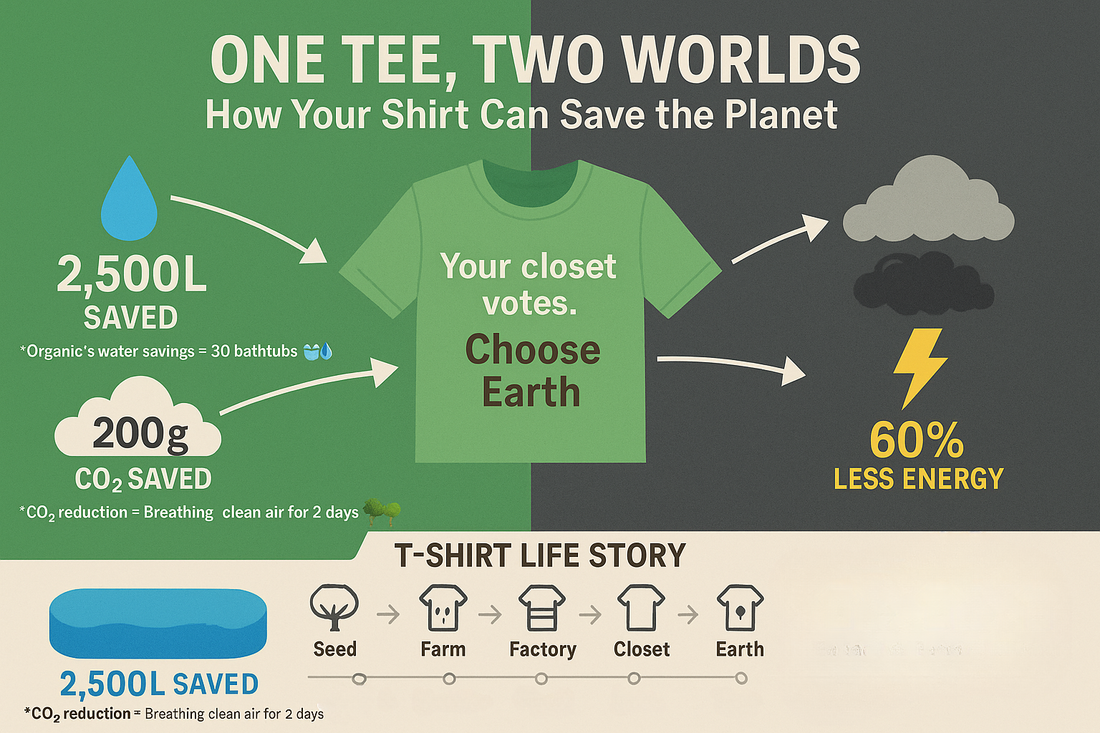
Why Your Next Outfit Should Be Certified: Fashion’s Sustainable Shift
Share
When picking out clothes, we often check the style, color, and price tag. But have you ever considered checking for a textile certification? Certified textiles are becoming fashion’s new standard, ensuring your clothes are safe, ethically made, and environmentally friendly. Let’s explore how these certifications are changing the fashion industry for the better.
What Exactly Are Certified Textiles?
Certified textiles carry specific labels guaranteeing they meet set standards for environmental impact, worker safety, and ethical practices. These certifications, like GOTS (Global Organic Textile Standard) and OEKO-TEX, provide assurance that your clothes don’t harm the planet or exploit people in the production process.
Why Certified Textiles Matter:
Fashion is the second-largest polluter after oil, with massive environmental and social implications. Certified textiles help tackle these problems by ensuring that materials are sourced responsibly, without harmful chemicals or exploitative labor practices.
For example, GOTS-certified cotton not only ensures organic farming practices but also fair working conditions for farmers and textile workers. OEKO-TEX certification guarantees your clothes are free from harmful substances, making them safe for your skin and the environment.
Several certifications stand out for their impact on the fashion industry. Here’s a closer look at the most influential ones in 2025:
- GOTS (Global Organic Textile Standard): The gold standard for organic textiles, GOTS requires at least 70% organic fibers and enforces strict ecological and social criteria across the supply chain. It bans toxic chemicals and ensures fair labor practices.
- OEKO-TEX Standard 100: Focused on product safety, this certification tests fabrics for over 100 harmful substances, making it ideal for sensitive skin and baby clothing.
- Fair Trade Certified: This ensures fair wages and safe working conditions for farmers and factory workers, promoting community development and ethical production.
- BCI (Better Cotton Initiative): BCI promotes sustainable cotton farming by reducing water and pesticide use and training farmers in eco-friendly methods.
- Cradle to Cradle (C2C): A holistic standard, C2C evaluates a product’s entire lifecycle, emphasizing recyclability, renewable energy, and safe materials that can return to nature or industry.
Real-Life Impact:
Consider brands like Patagonia or Stella McCartney. By choosing certified textiles, they’re setting a benchmark in fashion sustainability, influencing other brands to follow suit. When you pick their products, you're supporting better practices across the entire industry.
How Does This Benefit You?
Certified textiles aren’t just better for the environment; they directly benefit consumers too. Clothes made from certified materials typically last longer, feel better, and carry fewer health risks. Plus, wearing sustainably made fashion feels good—knowing you’re part of the solution, not the problem.
What Can You Do?
Choosing certified textiles is simple. Look for labels like GOTS, OEKO-TEX, or Fair Trade next time you shop. Your purchase becomes a powerful vote for sustainable fashion practices, encouraging brands to adopt these crucial standards.
Conclusion:
Certified textiles are reshaping fashion, pushing brands to prioritize the planet and people. It’s a win-win scenario: better clothes for you, better practices for the environment, and fairer conditions for workers. Making this small but impactful shift in your buying habits can collectively lead to massive positive changes in the industry.
Next time you shop, ask yourself: is this garment certified? Because the future of fashion depends on the choices you make today.






